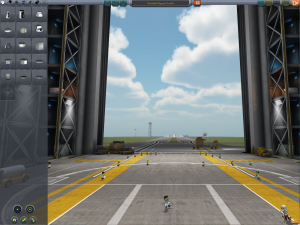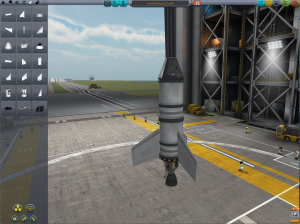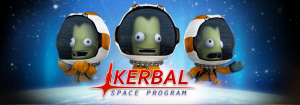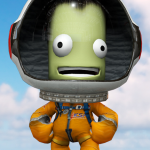Ok-here’s the deal. I need to use the creative side of my brain more often. Right now, it’s used to figure out how to get out of doing work, helping T with random projects around the house (why she asks my opinion when it comes to sewing beyond me). ((maybe I need to learn to sew.))
Sewing aside, I need to exercise the creative side MUCH more often. I’m working on getting my recording software working again, mostly so I can be motivated to play guitar. Thanks to Rob for volunteering to collaborate from miles away…playing guitar with someone may be a good way to get me going.
In the meantime, before I get my guitar set up to use a virtual recording studio, I’ve got words. I enjoy writing, but I can’t ever get myself motivated to write. Teresa keeps asking me what I like in an effort to get the ball rolling…I’m going to turn the tables on that suggestion and write about what it is that I do like.
SO…..a new category of blog has been created. While it doesn’t yet have a snappy name, I’m going to review things that I like. Movies, music, video games, locations in town, favorite recipes, and more are included in this category…it’s pretty all inclusive—things that make me happy and I think that you should know about.
Here’s the first (of hopefully many) entry into the new category of blog….
And the first thing reviewed is one of the few things I’ve been doing to encourage my creative side….
Kerbal Space Program.
On the surface, KSP is a video game that sort of defies definition. On one hand, it’s a realistic physics-based game involving space-flight. On another hand, it’s a sand-box game with unlimited potential to expand. On the third hand, it’s a game so complicated that they play it at NASA and so simple that a 5 year old can (and has) played it well. On the fourth hand, it’s a game that is in alpha status…meaning that it’s not remotely close to finished. It’s a trial run. But for an alpha, it’s surprisingly rich in detail and gameplay, even though it really is only about 40% of the finished game.
Ok. So it’s hard to describe. Here’s a sample video that shows just a little bit of everything you can do in the game. (warning, I made this video. I’m trying my hand at that too.) It does, however, end the way that almost EVERY mission I’ve planned did…firey explosiony disaster.
Here’s the gist of KSP in a single sentence: you build, from the ground up, a space program. You are responsible for designing, building, and operating a fleet of rockets and spaceplanes, in an immersive and fully realized solar system. Every object in the solar system can be interacted with…and has appropriate physics models. You can land on the moons, orbit the gas giants, aerobrake in an atmosphere, transfer orbits, and hopefully land safely back on the home planet, Kerbal. Building is as simple or as complicated as you want it. You can build rockets in stages, you can have detachable booster rockets, or you can do both. You can build satellites, orbiters, rovers, or full on landing craft. You can build a space station, and use other ships to dock with and refuel the station. In space, you can spacewalk and transfer from craft to craft. If you want, you can build airplanes and/or space planes. You can combine the two and build an airplane that is launched vertically and lands on the runway. Or you can just build a rover and drive the planet. The sky is far from the limit.
What makes this game so immersive is how complicated the physics engine is, while simultaneously uncomplicated game play is.
Gameplay is very, very simple. You start in vehicle assembly building, with a clean slate and a whole slew of options.
You build yourself a rocket. They can be simple single stage rockets with a motor, some fuel, and a capsule at the top. Here’s a rocket that took me less than 15 seconds to design.
They can also be immensely complicated—this is a rocket I used to launch a chunk of a space station into orbit (I had to use the launch pad because it didn’t fit into the VAB screen).
Once your rocket is finished, launch that sucker.
Or at least try to launch that sucker—something probably went wrong.
What makes the game so great is the level of detail that you can use. Stages can be created—start the main motors, release the gantry while simultaneously starting the boosters, climb some, releasing the boosters in sequence to use the fuel but save weight, dump lower stages, reach orbit, change orbit, crash into moon, etc.
Once you get to orbit, there’s a great system for helping you calculate orbital maneuvers—i.e. how long to burn and in what direction to end up where you want (fly to a space station, place a communications satellite, land on the moon, etc).
The crazy part about all of this is how, well, good, the physics engine is. This is a game that is so simple 5 year olds can play it, but I’m sure it’s being used to teach astronautical engineering. It will show you in an interactive way that forces the user to actually DO what the teacher has been talking about—molniya orbits, hohmann transfers, the crazy fact that you have to speed up to slow down (and that exhausts EVERYTHING I remember from Astro in college). It also demonstrates the fact that more weight means more fuel which means more weight, etc. (there’s a name for that too, but it’s long gone into whatever zone UH-1 Ops limits and my anniversary have disappeared into.) It will show how different bodies in space will affect each other…how a gravity slingshot works, why it takes so darn long to get to Earth to Mars and bac and why you can only really do it at certain points of orbit. Additionally, the game remembers earlier missions—so you can park a space station in orbit and dock with it. (or you can attempt a rescue of a Kerbin you stranded on the Mun. That happens a lot.)
On top of all of this, it’s fun. Even when things go perfectly, you have your little Kerbins staring at you from the bottom of the screen. They get scared—and they show it. When things go bad, just before they explode into thousands of little tiny pieces scatter across Kerbal’s beautiful landscape, your Kerbins will look to you, hoping you’re about to make it better. (You probably won’t.) Explosions are entertaining events, with some parts failing and others continuing to chug along peacefully—your capsule falls into the ocean while your rockets fly a perfect parabola into space. Your parachute fails because you forgot about slowing down first, or worse, it activates early because you screwed up your staging, and it pulls you out of alignment, your fuel burn goes uneven, which results in uneven thrust and stranding your Kerbin in orbit.
And, as I said, it’s easy to get sucked into. It took me about 3 months to design a ship that took off from the spaceport, landed on the moon, and safely returned my Kerbin to the planet. I don’t want to know how many times I tried. It was north of the century mark. But I finally pulled it off. I promptly started building a spaceship that could get me to the next planet out. I’m not there yet.
As I said earlier, the game isn’t finished yet. Eventually, there will be multiple game modes, where you have to meet goals in order to unlock bigger parts, stay under budget or fail your nation’s space race, have tech trees to research and unlock new parts, as well as train your Kerbins, who will gain experience and ability as they launch and recover. (part of the fun now is killing your poor Kerbins off…I’m not sure how I feel about needing to protect the goofy green bastards.)
Additionally, new parts are constantly being added—usually from user-made mods that fans create. The game’s dev team is very good about importing good ideas from the fans—things like ways to transfer fuel from part to part, new engines, spacecraft parts, and even the orbital tool are all mods that the game has incorporated. New updates come about every other month or so, and the last few months of work are light years past when I started playing about a year ago. I’d say it’s about 6-12 months away from the finished product.
The alpha status has positives and negatives—on the plus side, if you buy the game now, you get it for 22 bucks. You will get to update to every new version, including the final version when released, without paying any additional cost. Your purchase now funds the further versions of the game. On the negative, the game isn’t done. It’s only in sandbox mode, and some parts may not work well, some of the tools aren’t finished, and some things just don’t look as polished as well as they will in the final game.
The only other negative out there is this: the game is a resource beast. If you have a rocket that has more than 100 parts (which is likely if you’re building a multi-stage craft capable of reaching other planets or the moons) each part has to be rendered individually, both for graphics AND for physics. If you’ve got gimbaled rockets, moveable fins, and RCS thrusters, each one of those, as well as your fuel tanks, fuel lines, struts, supports, and more ALL have to be modeled. You can turn down the graphics levels, but it wasn’t until I played KSP on our new desktop that I realized how beautiful, how fluid, and how much fun the game truly was.
I cannot give this game a positive enough review. I highly recommend it for space nerds like myself, for the kid who grew up wanting to be an astronaut but figured out at some point that high level math was involved. (it doesn’t hurt to be a fighter pilot, and not even I was willing to go that far.) I’d also recommend it for kids—especially kids who want to learn a little about how spaceships work, and are willing to do some experimenting along the way. I wouldn’t recommend it for anyone under, say, 6 years old, because while it is simple to play around with, understanding things like symmetry help—but if they’re willing to learn through failure, just about anyone can use this game.
Here’s the link to download the demo—it’s not the most current version of the game, but it’ll give you a good idea on whether or not you want to pay for the full (fullish) version of the game.
FINAL REVIEW:
5 Jebidiah Kerbins out of 5.




